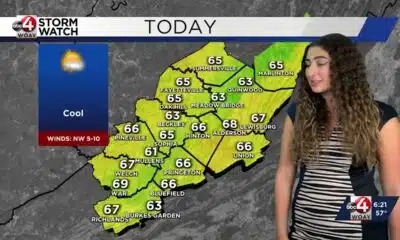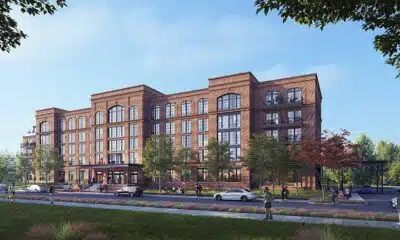News from the South - Louisiana News Feed
Louisiana plays a ‘wait-and-see game’ after approving a slate of bills to lower insurance rates
by Wesley Muller, Louisiana Illuminator
June 13, 2025
The Louisiana Legislature wrapped up its 2025 regular session Thursday having passed an agenda to try to lower insurance rates with legislation that focused on consumers and so-called “tort reform” policy targeting personal injury lawyers on the belief they are the cause of the state’s high coverage premiums.
The agenda was part of what Gov. Jeff Landry promised to shepherd through the legislature as a “balanced approach” to the state’s insurance crisis. However, one of Landry’s latest actions — vetoing a tort reform bill Wednesday — has upset a member of his own party, Sen. Alan Seabaugh, R-Many.
Seabaugh sponsored Senate Bill 111, which would have watered down Louisiana’s “bad faith” statute that holds insurance companies liable when they unreasonably delay or deny claims. Such practices made headlines in the wake of hurricanes Katrina and Rita in 2005.
Landry snubbed Seabaugh’s bill, writing in his veto explanation that it would have allowed insurers to deny claims, refuse reasonable settlements and avoid accountability.
“If the legislature would like to make reasonable changes to the bad faith statute next year, I will gladly work with them over the next year to make those changes,” the governor said.
In an interview Thursday, Seabaugh expressed frustration with Landry, saying he felt blindsided by the veto because he thought he had the governor’s support. He contrasted Landry with former Gov. John Bel Edwards, a Democrat.
“John Bel would call and tell me when he vetoed a bill,” Seabaugh said. “Jeff didn’t.”
Senate President Cameron Henry, R-Metairie, said Landry also doesn’t speak to him before vetoing any legislation, though Henry did not express any frustration over it.
As for the rest of the approved insurance legislation, Henry said it lives up to the governor’s promise of a “balanced approach” to rein in both sides — insurance companies and trial lawyers — and their unpopular practices that have become the target of complaints from policyholders.
The Senate president said he wants to hold off on any additional reforms for a couple of years to see if the measures approved this session have any impact on policy rates.
“That’s kind of a wait-and-see game,” Henry said, adding that laws the insurance industry backed last year are supposed to lower homeowner premiums but have so far not had any noticeable impact.
Others are less confident that the new laws will do anything to lower insurance rates.
“I talked to people in the insurance industry who tell me none of this is gonna make rates go down,” Sen. Jay Luneau, D-Alexandria, said, citing statements from the heads of tort reform associations.
Another controversial measure became the center of a public feud between the governor and Insurance Commissioner Tim Temple.
Gov. Landry might get the insurance laws he wants, but not without ruffling some Republican feathers
House Bill 148 by Rep. Jeff Wiley, R-Maurepas, was among the first this session that Landry signed into law, gives the state insurance commissioner power to strike down any insurance rate increase considered “excessive” or unreasonably high. Prior to the change, the commissioner could only exercise that power after holding a public hearing in which someone proved the state insurance market lacks competition.
Although Wiley sponsored the bill, the governor crafted the legislation with the help of two House Democrats and lobbied heavily for its passage, arguing that Temple wasn’t doing enough to regulate insurance rates.
Temple and other critics argued that Landry is using the new law to try to deflect any blame voters might place on him for Louisiana’s insurance crisis.
Wiley’s bill allows the public to review documents insurance companies file with the state when seeking a rate increase, but only if the insurance commissioner determines the information shouldn’t be kept confidential as a proprietary trade secret.
It takes effect on Aug. 1.
Consumer-focused bills
Among the many insurance bills passed this session was House Bill 329 by Rep. Troy Hebert, R-Lafayette, which allocates $5 million per year to the Louisiana Fortify Homes Program with fees collected from insurance companies. It will take effect July 1, 2026.
The program, managed by the Louisiana Department of Insurance, offers $10,000 grants to homeowners for the installation of hurricane-resistant roofs and has been effective at lowering homeowner insurance costs, according to a review by Louisiana Legislative Auditor Mike Waguespack.
Senate Bill 28 by Sen. Kirk Talbot, R-River Ridge, would give homeowners a nonrefundable income tax credit for up to $10,000 for out-of-pocket expenses used to pay for a fortified roof. Combined with an LDI grant, the new tax credit could allow more Louisiana homeowners to invest in fortified roofs. Talbot’s bill is pending approval of the governor.
House Bill 345 by Rep. John Wyble, R-Franklinton, requires a 60-day notice, up from 30 days, from an insurer to a policyholder prior to any cancellation or non-renewal of a homeowner policy except when termination of coverage is for nonpayment of premium. The bill is pending the governor’s consideration.
House Bill 496 by Rep. Troy Hebert, R-Lafayette, would give policyholders a pass protecting them from any rate increases tied to a lapse in auto coverage so long as the lapse doesn’t exceed 90 days. The bill would prohibit insurers from penalizing policyholders for a single instance of nonpayment during a five-year period. It received overwhelming bipartisan support from both chambers and is pending approval by the governor.
Senate Bill 34 by Luneau would prohibit an insurance company from changing or altering the repair estimate filed by the adjuster originally assigned to the claim without that adjuster’s permission. It is pending approval by the governor.
Pro-insurance, tort reform bills
House Bill 450, by Rep. Michael Melerine, R-Shreveport, ends the Housley presumption, a standard of evidence explained in a 1991 Louisiana Supreme Court ruling that applies to auto accidents, medical malpractice and other injury lawsuits. In a nutshell, the Housley presumption says courts should assume a plaintiff’s injuries resulted from the accident in question if they were in good health beforehand.
Lawmakers tried repeatedly to revoke the presumption in previous years, only to see their attempts fail or vetoed. Landry signed Melerine’s bill into law May 28, and it took effect immediately.
Lawmakers reject insurance bills that had direct relief for Louisiana homeowners
Senate Bill 231 by Sen. Mike Reese, R-Leesville, deals with a concept called “collateral source” that prevents civil defendants from admitting certain types of evidence into court, which critics say has allowed plaintiffs to sue for medical expenses they never actually had to pay. Reese’s bill would effectively undo that rule and could ultimately reduce the money plaintiffs can recover in auto accident lawsuits. It is pending consideration by the governor.
House Bill 431, by Rep. Emily Chenevert, R-Baton Rouge, limits the ability for people to recover damages for injuries sustained in accidents for which they are mostly at fault. The bill changes Louisiana’s comparative fault statute, which assigns a percentage of blame to each party in an accident and allows for the recovery of damages in proportion with those percentages.
Under prior law, a person partly at fault in an accident would be liable for their share of the damages and can recover the remaining amount found to be the fault of the other party. Chenevert’s bill changes that to prohibit recovery of any amount by a party who’s 51% or more at fault. It will take effect Jan. 1.
House Bill 436, by Rep. Gabe Firment, R-Pollock, prohibits “unauthorized aliens” — defined in the measure as individuals illegally in the United States under federal immigration law — from receiving general damages stemming from auto accidents. General damages include compensation for pain and suffering, but the proposal would still allow recovery for “special damages” such as medical expenses and property damage. It will take effect Aug. 1.
House Bill 291, sponsored by Rep. Jay Gallé, R-Mandeville, would extend the filing deadline, called a “prescriptive period,” for wrongful death lawsuits from one year to two, aligning Louisiana with the deadline in most other states. It does not apply to medical malpractice cases.
Proponents of the bill have argued a shorter prescriptive period attracts more tenuous lawsuits by essentially forcing people to quickly file claims so as to not lose their litigation rights. The proposal, which awaits the governor’s consideration, also complements a similar measure lawmakers approved last year to extend the deadline for filing personal injury claims.
GET THE MORNING HEADLINES.
Louisiana Illuminator is part of States Newsroom, a nonprofit news network supported by grants and a coalition of donors as a 501c(3) public charity. Louisiana Illuminator maintains editorial independence. Contact Editor Greg LaRose for questions: info@lailluminator.com.
The post Louisiana plays a ‘wait-and-see game’ after approving a slate of bills to lower insurance rates appeared first on lailluminator.com
Note: The following A.I. based commentary is not part of the original article, reproduced above, but is offered in the hopes that it will promote greater media literacy and critical thinking, by making any potential bias more visible to the reader –Staff Editor.
Political Bias Rating: Center-Left
This article presents a largely factual and comprehensive overview of Louisiana’s 2025 legislative session on insurance reform, with particular attention to both consumer-focused and pro-insurance/tort reform measures. It maintains journalistic neutrality overall but displays a subtle Center-Left lean through its framing. The article gives significant space to criticism of Governor Jeff Landry’s decisions — including dissent from both Republicans and Democrats — and highlights consumer protections while scrutinizing legislation that may favor insurance companies. The inclusion of tension between political figures and detailed references to vetoed bills and their implications reflects a tone that prioritizes transparency and public accountability.
News from the South - Louisiana News Feed
Since Katrina, infrastructure shortcomings create resiliency fatigue
by Elise Plunk, Louisiana Illuminator
August 26, 2025
An American flag has been strategically placed on one of the massive beams supporting the Lake Borgne Surge Barrier, part of the New Orleans region hurricane and storm damage risk reduction system.
Completed in 2009 to close off the Mississippi River Gulf Outlet, the barrier is designed to decrease damage to the metropolitan area when a major hurricane pushes water from the Gulf of Mexico into the lakes that surround the city and neighboring parishes.
The flag on the wall symbolizes pride and mourning, a reminder of the people it protects and a memorial for those who died 20 years ago when Hurricane Katrina hit. The failure of the federal levee system Aug. 29, 2005, claimed more than a thousand lives, displaced nearly a million people in the region and left permanent scars on New Orleans.
A go-to term emerged to praise New Orleanians and their neighbors who persevered through the catastrophe and took part in the unprecedented rebuilding: resilient. But as various recovery programs faltered and efforts to ensure disaster history would not repeat itself stalled, “resilient” or “resiliency” now elicit bitter feelings among locals.
“I think people have gotten tired of the word. Not just because it’s become cliché, but because people have begun to understand it as an excuse for lack of preparation or execution, lack of planning or execution,” said Michael Hecht, CEO and president of Greater New Orleans Inc., a regional economic development group.
Hecht came to Louisiana in 2006 from New York, where he led a 9/11 small business recovery program for New York Mayor Michael Bloomberg. After directing the state’s post-Katrina business recovery efforts, he was chosen to lead GNO Inc. in 2008.
“We had been knocked down by an unprecedented event,” Hecht said. “It was either be resilient or die, so we were resilient.”
The world has watched as New Orleans fundamentally changed, having lost a significant portion of its Black working class and attracting an upsurge in mostly white transplants from out of state. With more than 484,000 residents before Katrina, the city’s population plummeted below 344,000 in the 2010 census. The number climbed above 391,000 in 2020 and has since fallen about 4% as of 2024, according to various estimates.
Most who have stayed are ardent defenders of the city’s culture, of which resiliency fatigue is quickly becoming a feature. It’s reflected in Louisiana’s slow progress to rebuild coastal land and improve the adaptability of cities to match what post-Katrina boosters envisioned.
GET THE MORNING HEADLINES.
Restoration resistance
After Katrina, more emphasis was placed on rebuilding Louisiana’s vanishing coastal wetlands to protect residents from the increasing threat of hurricanes. A state Coastal Master Plan has taken shape over the past two decades, gaining official approval in 2023, to tie together restoration efforts and shield wetlands from sea level rise, subsidence and worsening hurricanes.
“We learned from Hurricane Katrina that levees alone aren’t enough,” said Alisha Renfro, a coastal scientist with National Wildlife Foundation. “We also need a healthy natural ecosystem sitting out in front of those levees to protect the structures that protect our communities.”
But the master plan encountered a huge setback in July with the end of what had been its keystone project, the Mid-Barataria Sediment Diversion project. Gov. Jeff Landry led pushback against the project for its feared impact on fisheries and nearly $3 billion price tag.
So far, the state’s Coastal Restoration and Protection Authority has spent $600 million to harness the power of the Mississippi River to bring fresh water and sediment to wetlands in the Barataria Basin – only to shelve the diversion.
“It was probably one of the most innovative, forward-thinking things in terms of being a resilience hub for the world,” said Amanda Moore, senior director for the National Wildlife Federation’s Gulf program.
A lifetime Gulf Coast resident, Moore moved to New Orleans from the Tampa, Florida, area in 2009 to take a job as a community organizer with the National Wildlife Federation. She joined the wave of thinkers, scientists and planners who came to the city after Katrina with the hope of bringing relief from the constant threat of flood.
“For people who live on the Gulf Coast – and especially South Louisiana – it’s exhausting,” she said.
The federation was among the voices that influenced upgrades to the region’s storm risk reduction system in the years after Katrina. Moore led efforts such as the MRGO Must Go Coalition, advocating for reversal of wetlands damage attributed to saltwater intrusion from the Mississippi River Gulf Outlet.
“You’re helping to alleviate maybe some of that exhaustion that people are personally feeling when you do the coastal restoration,” Moore said. “You’re adding this layer of protection, you’re helping it create a healthier environment that’s safer, so that does help people really be more resilient and not burnt out.”
Funding momentum peters out
As Katrina and its aftermath garnered worldwide attention, the recovery money streamed in from Washington and charitable foundations. The federal government directed $76 billion to Louisiana projects.
But keeping up the pace of investment after post-disaster attention spans waned became a problem for state and local leaders. Even with billions of dollars put into infrastructure, billions more would be needed for upkeep and replacing outdated systems. Stormwater drainage and drinking water in New Orleans, for example, rely on a power supply and mains that, in many spots, are more than a century old.
Charles Allen, Gulf Coast community engagement director for the National Audubon Society, recalls the vast amounts of federal and philanthropic dollars directed to the region in the years immediately after Katrina – and the dropoff that followed. It revealed the inability of state and local governments to sustain the level of rebuilding needed.
“It’s like anything in life, you know?” Allen said. “We gotta maintain our bodies, and we have to invest in whatever it takes to do that.”
The 2010 explosion of the Deepwater Horizon just off the Southeast Louisiana coast reopened wounds in the region that had yet to heal from Katrina’s trauma. Like the levee failures after the hurricane, It was considered another manmade, preventable disaster. Eleven crew members were killed, and the catastrophic oil spill tainted wildlife and habitat in all five Gulf Coast states. Livelihoods that depended on the Gulf were sidetracked for months, if not ended entirely.
Petroleum giant BP, which contracted the drillship, reached a $20 billion settlement with the federal government and impacted states. In Louisiana, it provided the long-sought financial foundation for its coastal master plan.
But with the Mid-Barataria Sediment Diversion shelved – and seemingly no other major restoration projects in the queue – Allen and others with vested interest in coastal flood protection fear Louisiana has become dependent on disaster recovery funding to pay for critical infrastructure that should already be in place.
“Let’s not wait for another storm because then it’s always too late when that happens,” Allen said “You gotta invest in it, you gotta support it, you’ve got to fund it.”
“It’s a lot of reactive disaster-related funding that’s allowing Louisiana to do this work,” Moore said. “We’ve got to figure out how to get out of that cycle.”
‘People can just be people’
Katrina recovery funds paid for upgrades to the massive pumping stations at the end of New Orleans’ outfall drainage canals that pump stormwater into Lake Pontchartrain. Beyond that, however, the city hasn’t engineered a way to handle street flooding from routine heavy rainstorms.
One project was held up as a way for New Orleans to adapt to the regular influx of rainwater, rather than fruitlessly attempt to pump it away. The Gentilly Resilience District called for turning neutral grounds in the neighborhood into retention areas. Residents would be encouraged to add features such as rain cisterns and permeable driveways, with grants to cover their cost.
The centerpiece of the district was the Mirabeau Water Garden, planned for 25 acres of land that were once home to a Catholic convent. The Congregation of the Sisters of St. Joseph donated the land to the city in 2015 on the condition it be used to enhance and protect the neighborhood. It was designed to divert and hold up to 10 million gallons of stormwater in ponds and constructed wetlands, with a pedestrian path and other amenities to invite the public into the space.
The architecture firm Waggonner and Ball designed the water garden using best practices for how to integrate water into a coastal urban setting. The idea came out of a trans-Atlantic collaboration after Katrina called the Dutch Dialogues, in which New Orleans experts tapped into the Netherlands’ experience living with water.
The federal government provided $141 million to the city in 2017 to bring the Gentilly Resilience District to life, with a completion date set for September 2022. But as of 2023, the U.S. Department of Housing and Urban Development noted that only 15% of the money had been spent. The water garden remains largely unfinished.
HUD’s inspector general designated the city a “slow spender” in a project audit, noting that its elements “did not always improve the program participants’ ability to withstand future extreme events.”
In addition to his role with GNO Inc., Hecht was named chairman of the governor’s committee to prepare New Orleans for the 2025 Super Bowl, played in February at the Superdome. Part of Hecht’s charge was to track progress on city infrastructure projects. And while the Gentilly Resilience District is well outside the city’s tourist zone, its lack of progress was noticeable.
“It’s happening. It’s been accepted as a concept, but it’s been extremely slow,” Hecht said. “And that’s just been execution failure, oftentimes on the part of the city.”
The communications team for the city of New Orleans did not respond to a request for comment on the timeline of finishing the Mirabeau Water Gardens.
The Mirabeau Water Garden’s status is considered by residents to be symbolic of New Orleans falling well short of the post-Katrina vision that boasted resilience as a key component of its new economy. Much like the Netherlands, it was thought that the Crescent City could become a beacon of expertise for how to adapt to climate change.
“We thought we were going to be able to really build a sector around selling our experience post Katrina with water management and environmental management around the world,” Hecht said. “If we’re being honest, it has not materialized much as part of our economy.”
It has happened in a small way, he said, citing the Water Institute in Baton Rouge. The independent research center focuses on the Mississippi River Delta and Gulf Coast, and it has applied its expertise to several projects in the region.
“But I think there’s still a lot more,” Hecht said.
Allen believes the opportunity to make Louisiana that hub of water management and resilience still exists, but he acknowledged it is still far from materializing 20 years after Katrina.
“This story of restoration, it’ll never end, which is a good thing,” Allen said. “This kind of work fuels jobs, environmental research and teaching.”
Until or unless that sector develops, the vulnerability of southeast Louisiana to future disasters will continue to place a strain on its residents, observers say, and climate change only heightens that risk.
“That is the goal … building structures, either literally or metaphorically, strong enough so that in a world with climate change and weather volatility, when things happen, either natural or man made, we don’t have to be resilient,” Hecht said.
Renfro, the coastal scientist with the National Wildlife Federation, said it’s wrong to keep placing the same burden of recovery on a population forced to accept conditions beyond their control.
“Asking the same people again and again to be resilient … it feels unfair,” she said. “People can just be people, and infrastructure can be resilient.”
YOU MAKE OUR WORK POSSIBLE.
Louisiana Illuminator is part of States Newsroom, a nonprofit news network supported by grants and a coalition of donors as a 501c(3) public charity. Louisiana Illuminator maintains editorial independence. Contact Editor Greg LaRose for questions: info@lailluminator.com.
The post Since Katrina, infrastructure shortcomings create resiliency fatigue appeared first on lailluminator.com
Note: The following A.I. based commentary is not part of the original article, reproduced above, but is offered in the hopes that it will promote greater media literacy and critical thinking, by making any potential bias more visible to the reader –Staff Editor.
Political Bias Rating: Center-Left
This content primarily focuses on the environmental, social, and governmental challenges faced by New Orleans post-Hurricane Katrina. It highlights the shortcomings of government and infrastructure in adequately preparing for and responding to disasters, emphasizes the need for investment in sustainable and natural coastal restoration efforts, and discusses social issues like demographic changes and economic recovery. The article critiques political and administrative decisions, such as the shelving of major restoration projects and slow spending of federal funds, from an angle that favors proactive climate resilience, environmental protection, and equitable recovery efforts—stances typically associated with center-left perspectives. However, it avoids overt partisanship or ideological rhetoric, maintaining a fact-based and nuanced approach.
News from the South - Louisiana News Feed
Monday Noon Tropics Update: Fernand heads north, Invest 99 fizzles
SUMMARY: Tropical Storm Fernand is improving in organization with 60 MPH winds but faces increasing wind shear and cooler waters as it moves north, likely weakening by Wednesday without threatening land. Invest 99 in the eastern Caribbean remains disorganized with strong wind shear, leading the National Hurricane Center to drop its development chance to 0%. The hurricane season has reached Fernand, with Gabrielle and Humberto next on the list, though no new formations are expected soon. Approaching the peak hurricane season around September 10, activity is likely to continue through September, with cooling temperatures and increased rain chance as fall approaches.
Meteorologist Alexandra Cranford tracks Tropical Storm Fernand and Invest 99 at noon on Monday, August 25, 2025.
News from the South - Louisiana News Feed
Fox 14 Your Morning News: Movement Monday
SUMMARY: Fox 14 Your Morning News’ Movement Monday features partner exercises focused on fun and fitness. The segment includes reverse lunges, one-legged squats, and partner high-five squats to build strength and balance. They use a ball or pillow for back-to-back seated twists and tossing exercises to engage the core. The workout ramps up with side-to-side knee kicks and ab work to boost abdominal strength. Lastly, partners perform planks combined with cardio moves like jumping through feet, emphasizing proper form, breathing, and rhythm to maximize calorie burn and stability. The lively, encouraging approach makes fitness enjoyable and accessible.
Amy returns for another lively installment of ‘Movement Monday,’ which includes a variety of exercises such as reverse lunges, one-legged squats, and planks, all aimed at promoting fitness and teamwork.
-
News from the South - Kentucky News Feed7 days ago
First of its kind clinical trial offers new hope for Kentuckians at risk of dementia
-
Our Mississippi Home6 days ago
MSU Unveils Mixed-Use Development Featuring Boutique Hotel, Cultural Landmark
-
News from the South - Arkansas News Feed6 days ago
‘Alligator Alcatraz’ probed by Dems as ICE detention centers multiply in states
-
News from the South - Alabama News Feed6 days ago
Grants to boost local emergency alert systems in question as public media agency closes
-
News from the South - Arkansas News Feed5 days ago
New I-55 bridge between Arkansas, Tennessee named after region’s three ‘Kings’
-
Local News6 days ago
Winged ferry that glides like a pelican tested for coastal transportation
-
News from the South - West Virginia News Feed7 days ago
WV groups call on Morrisey, McCuskey to push against end of federal solar program
-
News from the South - Texas News Feed3 days ago
DEA agents uncover 'torture chamber,' buried drugs and bones at Kentucky home









































